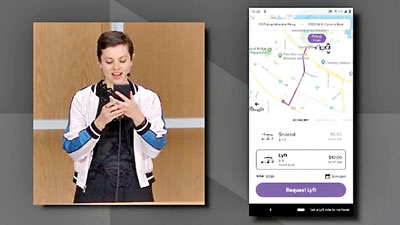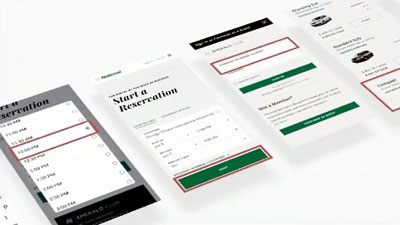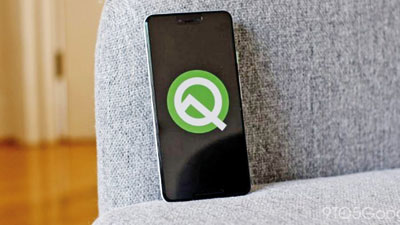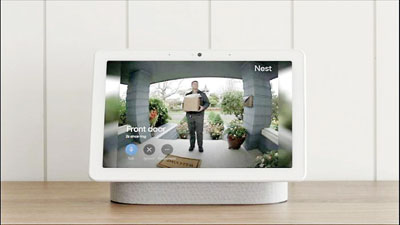A look at Google I/O 2019
Google managed to cram all the expectations we were having about Google I/O 2019 into a 2-hour long keynote. Needless to say, this put all our wandering minds to rest. Here are some of the biggest announcements from the Google IO 2019 Keynote.
A New Pixel is Confirmed
Say Hello to the Pixel 3a and Pixel 3a XL. Both devices pack a Snapdragon 670 chip and 4GB of RAM. You also get 64GB of onboard storage. There’s no expandable storage though, but that’s what Google Photos is there for.

Meet the Google Pixel 3a and 3a XL (Image Credits: WCCFTtech)
The devices themselves are literally cheaper versions of the Pixel 3. As such, you get a polycarbonate body. No waterproofing and no wireless charging. You do however get a 3.5mm headphone jack and a 3,000 mAh and 3,700 mAh battery on the Pixel 3a and Pixel 3a XL respectively. Other features include a rear-mounted fingerprint sensor and stereo speakers.

While the rest of the phone may be cheap, the Camera is not even close to cheap (Image Credits: Android Central)
One thing that the new Pixel devices don’t go cheap on are the cameras. Both new Pixel devices pack the same camera hardware as the flagship Pixel 3. They also get Night Sight, Top Shot and all the other goodies that Pixel 3 has in the camera department. They also get Google’s AI Call Screen and Google Duplex along with the company’s new AR mode for Google Maps.
In terms of pricing, you’re looking at a starting price of $400 for the Pixel 3a. The larger Pixel 3a XL starts off at $480.
Google Assistant just got a turbocharge
Google Assistant has been one of the breakthroughs for smartphone users. And it just got better. All the AI processing gets done on your device without the need for the cloud. This in turn means that the entire process came down from around 100GB to just 500MB. The results: the new Google Assistant will be upto 10x faster.

Imagine having a continued conversation with Google Assistant MobileSyrup)
The next generation of Google Assistant can also handle even more tasks at the same time without you having to switch between apps. This is thanks to Continued Conversation. So rather than repeatedly saying “Hey, Google”, you can say it once, and get all your work done.

Google Assistant will be upto 10x faster. So you can get more done in less time (Image Credits: MobileSyrup)
The onstage demo showed everything from composing a message, to searching for an image to attach, to sending the message, all in a seamless manner. We can expect the next generation Google Assistant for the latest Pixel devices later this year.
Seeing things through a whole new lens
Google Search, the oldest and most popular tool from Google is undergoing a change as well. You can directly access AR content from a Google Image Search on AR-compatible devices. A new “view in 3D button” pops up in the search results whenever 3D content is available. Eyeing a new pair of shoes and want to see how it matches your outfit? Well, that will be a possibility soon.

Google Lens will be able to show you what your food would look like before you order (Image Credits: The Verge)
Google Lens was another breakthrough. It made our smartphone cameras a lot smarter. The latest Google Lens update promises even more. For example, Google Lens will be able to search for a dish on a menu, and then show you what that dish would look like before you order it. Done with your meal? Point the camera to the bill and Google Lens will calculate the total, add a tip and even split the bill if needed.
Translating text via Google Lens has also improved. Once translated, you can have your device read back the text to you. This is very useful for translating road signs that are in a foreign language. The icing on the cake is that the software has been tuned to run on Android devices as cheap as $35.
That’s not all at Google IO 2019
We also saw Google Maps get an Incognito mode. When enabled, Google Maps will not be able to track your location and search history. The company also announced that users would be able to delete their location, web and app activity between periods of 3 to 18 months.
Project Mainline allows you to get Android updates faster. The new system of updates woud be offered via modules aimed at parts of a device rather than an entire system update. This should also prevent an update from messing up other parts of the device’s software or hardware as a result of the update.
Was Google IO 2019 worth the hype?
Overall, Google IO 2019 lived up to the hype that was created. Mid-range Pixel devices and advancements in Lens and Google Search give us more ways to search and interact with objects. Live subtitles are also a welcome feature for those who are hearing impaired.
Duplex on the Web
A highlight of Google IO 2018, Google Duplex will now do more than just handle your unwanted phone calls. It can now fill out reservation forms online and pull data from your Gmail and previous bookings to understand your preferences.

Google Duplex on the web takes making reservations to a whole new level (Image Credits: KnowTechie)
Rather than going through the haggling process of making the reservation Google Duplex would do it all on your behalf. Once done, you would just see an auto-filled form to approve what Google Duplex filled out.
A New Pixel is Confirmed

The latest beta of Android Q adds Focus Mode and a number of other improvements (Image Credits: 9to5Google)
Along with dark mode, and a number of other improvements, the latest beta of Android Q was also made available to Pixel owners at Google IO 2019. The new beta adds Focus Mode. In comparison to the Wind Down mode seen with Android Pie’s Digital Wellbeing, the new mode lets you select particular apps that you want to avoid for a certain period of time. Parents can set app limitations to see what apps their kids have been spending their time on.
Smart Reply will also make its way to third-party messaging apps. We have thus far seen it on the default messaging app so it will be useful to see it across other messaging apps as well.
With Live Caption, your Google device will be able to identify speech and transcribe it directly to your screen. Live Captions use Google speech recognition to put captions over any video. So even if you’re on a video call, you can get captions as well. The processing is all done on the device, so no additional data is sent to the cloud. This in turn means lesser mobile data use and increased security.

Live Caption on Android Q adds real time captions to any videos being played on the device (Image Credits: FoneArena)
Live Relay takes this a step further. Aimed at people who are hearing impaired, the device would use speech recognition and text-to speech and act as a middleman to transcribe the call to the impaired person, and speak the message to the other person.
Google Nest Hub
Think of the Nest Hub as a rebranded lineup of Google Home products. The Google Home Hub will become the Nest Hub. A big brother of the Nest Hub called the Nest Hub Max will also be introduced. This is essentially a larger version of the Nest Hub with a camera and a larger display.

You can use the Google Nest Hub Max as a security camera as well (Image Credits: TechHive)
You can use the Nest Hub Max to make video calls via Google Duo. The camera will also be able to follow you around the frame as you move. You can also use the Nest Hub Max as an indoor security camera to stream a live feed of your home to your phone.
In terms of security, Google claims that the Nest Hub Max will never record you without your knowledge. A small green LED shows you when the device is recording. Speaking of security, the Nest Hub Max will be able to recognize you with Face Match and show you personalized information.
If it sees a face that it can’t recognize, the Nest Home Max will notify you immediately. In terms of pricing. The Nest Hub Max will launch at $229. The original Nest Hub takes a drop in price at $129.
(The author is a senior writer at Readme.lk)


